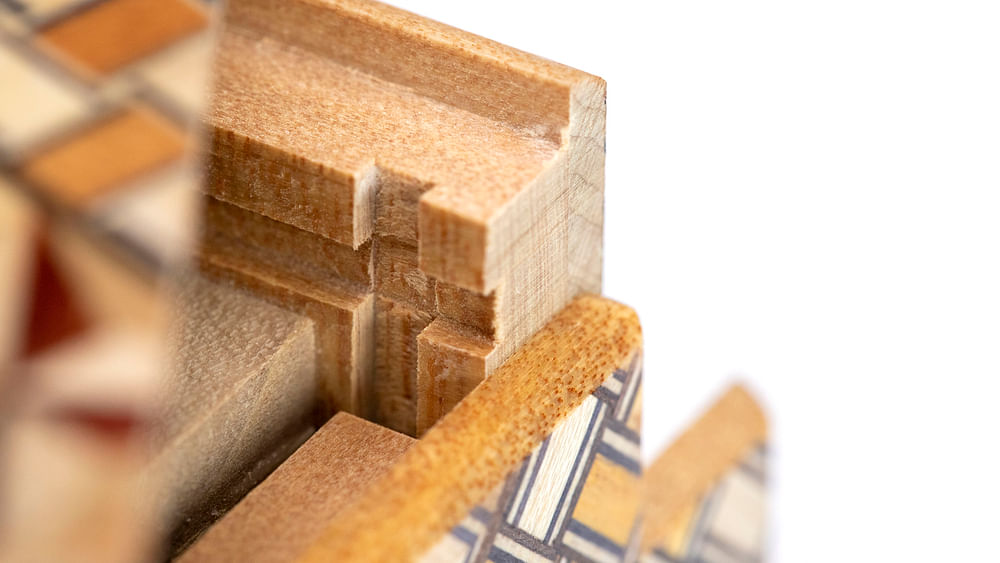What Is A Japanese Puzzle Box (Himitsu Bako)?
Japanese puzzle boxes (also known as a secret or trick box) are boxes with six sides with a hidden opening that can only be released after you’ve solved a puzzle. They come with varied designs and in a multitude of different designs. They also are graded according to difficulty. There will be a hidden space inside the box that you have to get to. Usually there are no sliding drawers involved. To get inside, you have to perform a series of sequential adjustments to the exterior of the box to crack the secret.

Design of Puzzle Boxes
There is a very wide variety of trees in the Hakone mountains - the region of Japan that is said to have invented puzzle boxes. This led to the wide variety of wooden colors seen in Japanese puzzle boxes. The highly-detailed, intricate geometric designs used are called Yosegi-Zuiku which is a wooden mosaic that is more commonly seen in handicrafts.

This Yosegi-Zuiku work is like parquet flooring. It’s made by putting different layers of different types of wood together to form a pattern, then thinly slicing them off. A sturdy lacquer is then applied to give a shine and of course, protection to the finished item.
You have to go back to 1870 to find the first ones made. Three craftsmen, Ohkawa-san Okiyama-san and Kikukawa-san created the first puzzle box integrated with Yosegi-Zaiku design thus creating the debut Himitsu-Bako, or Japanese puzzle box.
Back in 1984, both the name Himitso-Bako and the design, Yosegi-Zaiku were given a National Traditional Handicraft designation by the powers that be in Japan. Today, there are less than 100 people creating authentic Japanese puzzle boxes in Hakone.
How to make a Japanese puzzle box
First off, it’s really not easy. Really. It’s the incredible balancing act of tightness and looseness and understanding the varying degrees of friction different woods provide. Too loose and it’s no challenge. Too tight and it’s impossible to solve. The mastery in constructing an excellent puzzle box is not to be taken lightly.
The box makers work on one box at a time, and are responsible for every aspect. The first job is to select the woods to be used. These are left to season before any work commences. The wood is then cut, planed and sawed to perfection and the different pieces are put together to assemble the Himitsu-Bako. All aspects of the box are tested thoroughly to make sure they’re up to scratch. The final step is to apply the Yosegi-Zaiku design to the outside of the puzzle box. There are no text books or online courses to learn. This is done the old-fashioned way. You start as an apprentice and the art is passed down to you from a Master Craftsman. There are very few suppliers of high-end, authentic Himitsu-Bako because it’s so very hard to do!
How to solve Japanese Puzzle Boxes
First off, you need to know about Sun and Steps. The Sun is a unit of measurement that is utilized when constructing Japanese puzzle boxes. It’s the length of a box. One Sun is around 3cm. Thus, a 4 Sun box would come it at 12cm. The norm is for a puzzle box to be in the range of 3 to 6 Sun.
The Steps are how many steps it would take to solve the puzzle. Most are between 4 and 66 Steps - although the record-breaker is a massive 1536 Steps. The important thing to realise about the Steps is that they are linear and must be completed in sequential order to gain access to the inside of the box. The number of Steps doesn’t correlate to the difficulty of the puzzle. You can find more advice here: How To Open A Japanese Puzzle Box. Good luck!
See more puzzles
Useful links for our magic products

